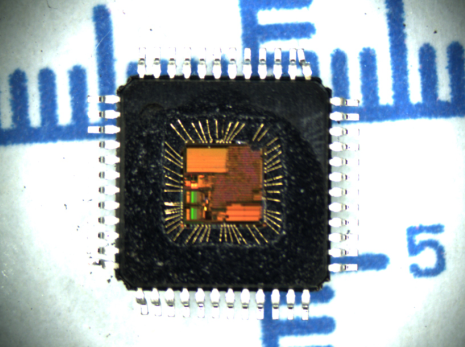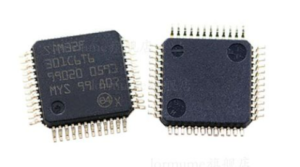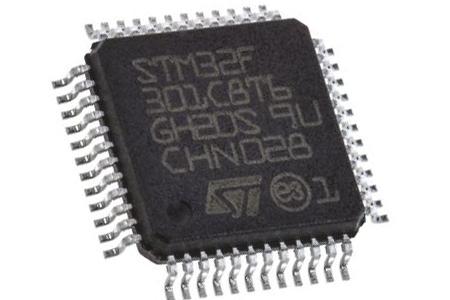Posts Tagged ‘łamanie zawartości pamięci flash chipa ochronnego STM32F301C8’
 Breaking STM32F301C8 Secured Microprocessor Flash Memory
Breaking STM32F301C8 Secured Microprocessor Flash Memory
Breaking STM32F301C8 Secured Microprocessor Flash Memory and readout embedded firmware from locked microcontroller stm32f301c8, replicate flash program to new mcu stm32f301c8;

The regulator has three operation modes: main (MR), low-power (LPR), and power-down.
- The MR mode is used in the nominal regulation mode (Run)
- The LPR mode is used in Stop mode.
- The power-down mode is used in Standby mode: the regulator output is in high impedance, and the kernel circuitry is powered down thus inducing zero consumption.
The voltage regulator is always enabled after reset. It is disabled in Standby mode.
The STM32F301x6/8 supports three low-power modes to achieve the best compromise between low power consumption, short startup time and available wakeup sources:
- Sleep mode
In Sleep mode, only the CPU is stopped. All peripherals continue to operate and can wake up the CPU when an interrupt/event occurs.
- Stop mode
Stop mode achieves the lowest power consumption while retaining the content of SRAM and registers to decrypt embedded firmware from arm stm32f301c6 microprocessor. All clocks in the 1.8 V domain are stopped, the PLL, the HSI RC and the HSE crystal oscillators are disabled. The voltage regulator can also be put either in normal or in low-power mode.

взлом защищенной микропроцессорной флэш-памяти STM32F301C8 и считывание встроенного микропрограммного обеспечения с заблокированного микроконтроллера stm32f301c8, репликация флэш-программы на новый микроконтроллер stm32f301c8
The device can be woken up from Stop mode by any of the EXTI line. The EXTI line source can be one of the 16 external lines, the PVD output, the RTC alarm, COMPx, I2C or USARTx.

- Standby mode
The Standby mode is used to achieve the lowest power consumption. The internal voltage regulator is switched off so that the entire 1.8 V domain is powered off. The PLL, the HSI RC and the HSE crystal oscillators are also switched off.
After entering Standby mode, SRAM and register contents are lost except for registers in the Backup domain and Standby circuitry by restoring mcu stm32f301r8 mcu flash firmware. The device exits Standby mode when an external reset (NRST pin), an IWDG reset, a rising edge on the WKUP pin, or an RTC alarm occurs.